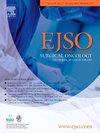保乳手术中边缘评估的当前选择和未来展望
IF 3.5
2区 医学
Q2 ONCOLOGY
引用次数: 0
摘要
乳房保乳手术(BCS)的无癌边缘对于避免再次切除手术、降低局部复发风险和及时进行辅助治疗至关重要。大约20 - 25%接受BCS的患者需要额外的手术来去除残留的疾病,这表明仍然需要有效的术中切缘评估。术中病理评估通过冷冻切片和细胞学诊断准确性高,但耗时,资源密集,并评估有限的采样点。替代技术提供更快速的结果,但受相对较低灵敏度的限制。发展中的技术显示出诊断准确性的希望,但仍需在临床实践中得到证实。本研究的目的是为外科医生在术中使用的当前切缘评估方法提供一个全面的总结。方法本研究回顾了2009年1月至2022年12月的科学文献,包括PubMed和谷歌Scholar上现有和建议的BCS术中切缘评估技术的40篇论文。总的来说,根据所采用的技术类型,对现有的8项技术和正在开发的10项技术进行了评价。结果病理学评价与细胞学评价的敏感性和特异性最高,分别为97%和99%。利用生物阻抗谱技术的灵敏度在13%到87%之间。质谱仪灵敏度为80% ~ 100%,特异度为84% ~ 98.85%。其他技术包括光学相干断层扫描、药理学和x射线联合技术的灵敏度分别为93% - 96%、49.3% - 98%和56% - 85.6%。由于其各自的优势、局限性、敏感性和特异性,对降低再切除率的有效性进行了回顾,但尚未取代病理评估。适当有效的术中切缘评估可降低BCS的最终阳性切缘和随后的再切除率。外科医生应该根据可用性和经验来利用技术。本文章由计算机程序翻译,如有差异,请以英文原文为准。
Current options and future perspectives for margin assessment in breast conservation surgery
Introduction
Cancer free margins from breast conservation surgery (BCS) are essential to avoid re-excision procedures, minimize risk of local recurrence, and for adjuvant therapy without delay. Approximately 20–25 % of patients who undergo BCS require additional procedures to remove residual disease, suggesting an ongoing need for effective intraoperative margin assessment. Intraoperative pathology assessment by frozen sections and cytology yields high diagnostic accuracy, but is time-consuming, resource-intensive, and evaluates limited sampling points. Alternative technologies provide more rapid results but are limited by relatively low sensitivity. Technologies in development show promise for diagnostic accuracy but remain to be proven in clinical practice. The objective of this study is to provide a comprehensive summary of current margin assessment methods for surgeons to utilize in the intraoperative setting.
Methods
This study reviewed scientific literature from January 2009 to December 2022 consisting of 40 manuscripts of current and proposed intraoperative margin assessment techniques for BCS from PubMed and Google Scholar. Overall, eight current technologies and ten technologies under development were evaluated based on the type of technology employed.
Results
Pathologic evaluation with cytology had the highest sensitivity and specificity with 97 % and 99 % respectively. Technologies utilizing bioimpedance spectroscopy had sensitivities ranging from 13 % to 87 %. Mass spectrometry devices had sensitivities ranging from 80 % to 100 % and specificities ranging from 84 % to 98.85 %. Other technologies including optical coherence tomography, pharmacology, and X-ray combined technologies had sensitivities of 93 %–96 %, 49.3 %–98 %, and 56 %–85.6 % respectively.
Discussion
The effectiveness in lowering re-excision rates derived from their respective advantages, limitations, sensitivity, and specificity were reviewed and have yet to replace pathologic assessment. Appropriate and effective intraoperative margin assessment would lower final positive margins and subsequent re-excision rates in BCS. Surgeons should utilize technology based on availability and experience.
求助全文
通过发布文献求助,成功后即可免费获取论文全文。
去求助
来源期刊

Ejso
医学-外科
CiteScore
6.40
自引率
2.60%
发文量
1148
审稿时长
41 days
期刊介绍:
JSO - European Journal of Surgical Oncology ("the Journal of Cancer Surgery") is the Official Journal of the European Society of Surgical Oncology and BASO ~ the Association for Cancer Surgery.
The EJSO aims to advance surgical oncology research and practice through the publication of original research articles, review articles, editorials, debates and correspondence.
 求助内容:
求助内容: 应助结果提醒方式:
应助结果提醒方式:


